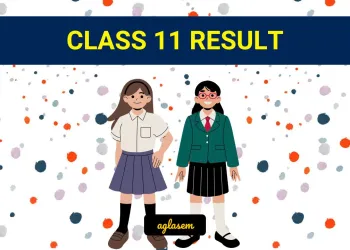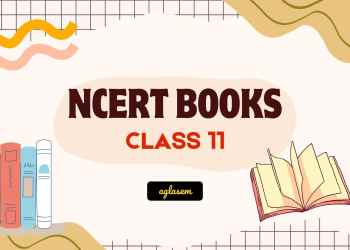Candidates can download NCERT Exemplar Class 11 Biology Chapter 6 from this page. The exemplar has been provided by the National Council of Educational Research & Training (NCERT) and the candidates can check it from below for free of cost. It contains objective, very short answer type, short answer type, and long answer type questions. Along with it, the answer for each question has also been provided. From the NCERT Exemplar Class 11 Biology Chapter 6, candidates can understand the level and type of questions that are asked in the exam.
NCERT Exemplar Class 11 Biology Chapter 6 Anatomy of Flowering Plants
NCERT Class 11 Biology Chapter 6 is for Anatomy of Flowering Plants. The type of questions that will be asked from NCERT Class 11 Biology Chapter 6 are displayed in the below provided NCERT Exemplar Class 11 Biology Chapter 6. With the help of it, candidates can prepare well for the examination.
Also Check: NCERT Solutions for Class 11 Biology
Multiple Choice Questions
- A transverse section of stem is stained first with safranin and then with fast green following the usual schedule of double staining for the preparation of a permanent slide. What would be the colour of the stained xylem and phloem?
a. Red and green
b. Green and red
c. Orange and yellow
d. Purple and orange - Match the followings and choose the correct option from below
A. Meristem i. Photosynthesis, storage B. Parenchyma ii. mechanical support C. Collenchyma iii. Actively dividing cells D. Sclerenchyma iv. stomata E. Epidermal tissue v. sclereids Options:
a. A-i, B-iii, C-v, D-ii, E-iv
b. A-iii, B-i, C-ii, D-v, E-iv
c. A-ii, B-iv, C-v, D-i, E-iii
d. A-v, B-iv, C-iii, D-ii, E-i - Match the following and choose the correct option from below
A. Cuticle i. guard cells B. Bulliform cells ii. single layer C. Stomata iii. waxy layer D. Epidermis iv. empty colourless cell Options:
a. A-iii, B-iv, C-i, D-ii
b. A-i, B-ii, C-iii, D-iv
c. A-iii, B-ii, C-iv, D-i
d. A-iii, B-ii, C-i, D-iv - Identify the tissue system from among the following
a. Parenchyma
b. Xylem
c. Epidermis
d. Phloem - Cells of this tissue are living and show angular wall thickening. They also provide mechanical support. The tissue is
a. Xylem
b. Sclerenchyma
c. Collenchyma
d. Epidermis - Epiblema of roots is equivalent to
a. Pericycle
b. Endodermis
c. Epidermis
d. Stele - A conjoint and open vascular bundle will be observed in the transverse section of
a. Monocot root
b. Monocot stem
c. Dicot root
d. Dicot stem - Interfascicular cambium and cork cambium are formed due to
a. Cell division
b. Cell differentiation
c. Cell dedifferentiation
d. Redifferentiation - Phellogen and Phellem respectively denote
a. Cork and cork cambium
b. Cork cambium and cork
c. Secondary cortex and cork
d. Cork and secondary cortex - In which of the following pairs of parts of a flowering plant is epidermis absent?
a. Root tip and shoot tip
b. Shoot bud and floral bud
c. Ovule and seed
d. Petiole and pedicel - How many shoot apical meristems are likely to be present in a twig of a plant possessing, 4 branches and 26 leaves
a. 26
b. 1
c. 5
d. 30
e. 4 - A piece of wood having no vessels (trachea) must be belong to
a. Teak
b. Mango
c. Pine
d. Palm - A plant tissue, when stained, showed the presence of hemicellulose and pectin in cell wall of its cells. The tissue represents
a. Collenchyma
b. Sclerenchyma
c. Xylem
d. Meristem - Fibres are likely to be absent in
a. Secondary phloem
b. Secondary Xylem
c. Primary phloem
d. Leaves - When we peel the skin of a potato tuber, we remove
a. Periderm
b. Epidermis
c. Cuticle
d. Sapwood - A vesselless piece of stem possessing prominent sieve tubes would belong to
a. Pinus
b. Eucalyptus
c. Grass
d. Trochodendron - Which one of the following cell types always divides by anticlinal cell division?
a. fusiform initial cells
b. root cap
c. protoderm
d. phellogen - What is the fate of primary xylem in a dicot root showing extensive secondary growth?
a. It is retained in the centre of the axis
b. It gets crushed
c. May or may not get crushed
d. It gets surrounded by primary phloem
Very Short Answer Type Questions
- Product of photosynthesis is transported from the leaves to various parts of the plants and stored in some cell before being utilised. What are the cells/ tissues that store them?
- Protoxylem is the first formed xylem. If the protoxylem lies next to phloem what kind of arrangement of xylem would you call it?
- What is the function of phloem parenchyma?
- What is present on the surface of the leaves which helps the plant prevent loss of water but is absent in roots?
- What is the epidermal cell modification in plants which prevents water loss?
- What part of the plant would show the following:
a. Radial vascular bundle
b. Polyarch xylem
c. Well developed pith - What are the cells that make the leaves curl in plants during water stress?
- What constitutes the cambial ring?
- Give one basic functional difference between phellogen and phelloderm.
- Arrange the following in the sequence you would find them in a plant starting from the periphery – phellem, phellogen, phelloderm.
- If one debarks a tree, what parts of the plant is being removed?
- The cross-section of a plant material showed the following features when viewed under the microscope.
a. The vascular bundles were radially arranged.
b. Four xylem strands with exarch condition of protoxylem. To which organ should it be assigned? - What do hard wood and soft wood stand for?
Short Answer Type Questions
- While eating peach or pear it is usually seen that some stone like structures get entangled in the teeth, what are these stone like structures called?
- What is the commercial source of cork? How is it formed in the plant?
- Below is a list of plant fibres. From which part of the plant these are obtained
a. Coir
b. Hemp
c. Cotton
d. Jute - What are the characteristic differences found in the vascular tissue of gymnosperms and angiosperms?
- Epidermal cells are often modified to perform specialized functions in plants. Name some of them and function they perform.
- The lawn grass (Cyandon dactylon) needs to be mowed frequently to prevent its overgrowth. Which tissue is responsible for its rapid growth?
- Plants require water for their survival. But when watered excessively, plants die. Discuss.
- A transverse section of the trunk of a tree shows concentric rings which are known as growth rings. How are these rings formed? What is the significance of these rings?
- Trunks of some of the aged tree species appear to be composed of several fused trunks. Is it a physiological or anatomical abnormality? Explain in detail.
- What is the difference between lenticels and stomata?
- Write the precise function of
a. Sieve tube
b. Interfascicular cambium
c. Collenchyma
d. Aerenchyma - The stomatal pore is guarded by two kidney shaped guard cells. Name the epidermal cells surrounding the guard cells. How does a guard cell differ from an epider mal cell? Use a diagram to illustrate your answer.
- Point out the differences in the anatomy of, leaf of peepal (Ficus religiosa) and maize (Zea mays ). Draw the diagrams and label the differences.
- Palm is a monocotyledonous plant, yet it increases in girth. Why and how?
Long Answer Type Questions
- The arrangement of ovules within the ovary is known as placentation. What does the term placenta refer to? Draw various types of placentations in the flower as seen in T.S. and V.S.
- Deciduous plants shed their leaves during hot summer or in autumn. This process of shedding of leaves is called abscission. Apart from physiological changes what anatomical mechanism is involved in the abscission of leaves.
- Is Pinus an evergreen tree? Comment.
- Assume that a pencil box held in your hand, represents a plant cell. In how many possible planes can it be cut? Indicate these cuts with the help of line drawings.
- Each of the following terms has some anatomical significance. What do these terms mean? Explain with the help of line diagrams.
a. Plasma Desmosomes/ Plasmodesmata
b. Middle lamella
c. Secondary wall - Distinguish between the following:
a. Exarch and endarch condition of protoxylem
b. Stele and vascular bundle
c. Protoxylem and metaxylem
d. Interfascicular cambium and interfascicular cambium
e. Open and closed vascular bundles
f. Stem hair and root hair
Click Here to download NCERT Exemplar Class 11 Biology Chapter 6 Anatomy of Flowering Plants.
Answers to Multiple Choice Questions
| 1-a; | 2-b; | 3-a; | 4-a; | 5-c; | 6-c; |
| 7-d; | 8-c; | 9-b; | 10-a; | 11-c; | 12-c; |
| 13-a; | 14-b; | 15-a; | 16-d; | 17-c; | 18-a |
Biology Physics Chemistry Maths
To get study material, exam alerts and news, join our Whatsapp Channel.


